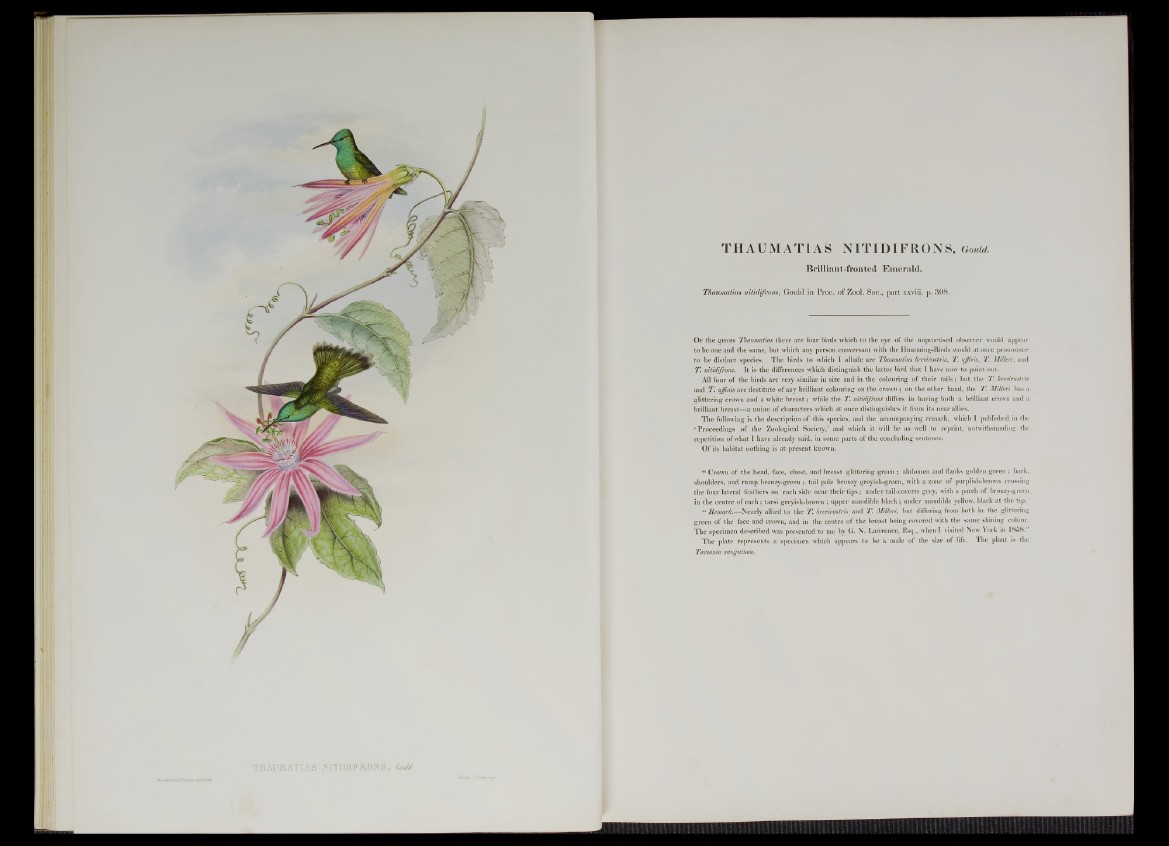
[AUMATIAS NITIDIFRONS, CouU.
THAUMAT1AS NITIDIFRONS, Gould.
Brilliant-fronted Emerald.
Thaumatias nitidifrons, Gould in Proc. of Zool. Soc., part xxviii. p. 308.
Of the genus Thaumatias there are four birds which to the eye of the unpractised observer would appear
to be one and the same, but which any person conversant with the Humming-Birds would at once pronounce
to be distinct species. The birds to which I allude are Thaumatias bremrostris, T. affitns, T. Milleri, and
T. nitidifrons. It is the differences which distinguish the latter bird that I have now to point out.
All four of the birds are very similar in size and in the colouring of their tails; but the T. bremrostris
and T. ajfnis are destitute of any brilliant colouring on the crown ; on the other hand, the T. Milleri has a
glittering crown and a white breast; while the T. nitidifrons differs in having both a brilliant crown and a
brilliant breast—a union of characters which at once distinguishes it from its near allies.
The following is the description of this species, and the accompanying remark, which I published in the
‘Proceedings of the Zoological Society,’ and which it will be as well to reprint, notwithstanding the
repetition of what I have already said, in some parts of the concluding sentence.
Of its habitat nothing is at present known.
“ Crown of the head, face, chest, and breast glittering green ; abdomen and flanks golden green ; back,
shoulders, and rump bronzy-green ; tail pale bronzy greyish-green, with a zone of purplish-brown crossing
the four lateral feathers on each side near their tips; under tail-coverts grey, with a patch of bronzy-green
in the centre of each; tarsi greyish-brown ; upper mandible black; under mandible yellow, black at the tip.
“ Remark.—Nearly allied to the T. bremrostris and T. Milleri, but differing from both in the glittering
green of the face and crown, and in the centre of the breast being covered with the same shining colour.
The specimen described was presented to me by G. N. Lawrence, Esq., when I visited New York in 1858.”
The plate represents a specimen which appears to be a male of the size of life. The plant is the
Tacsonia sanguinea.